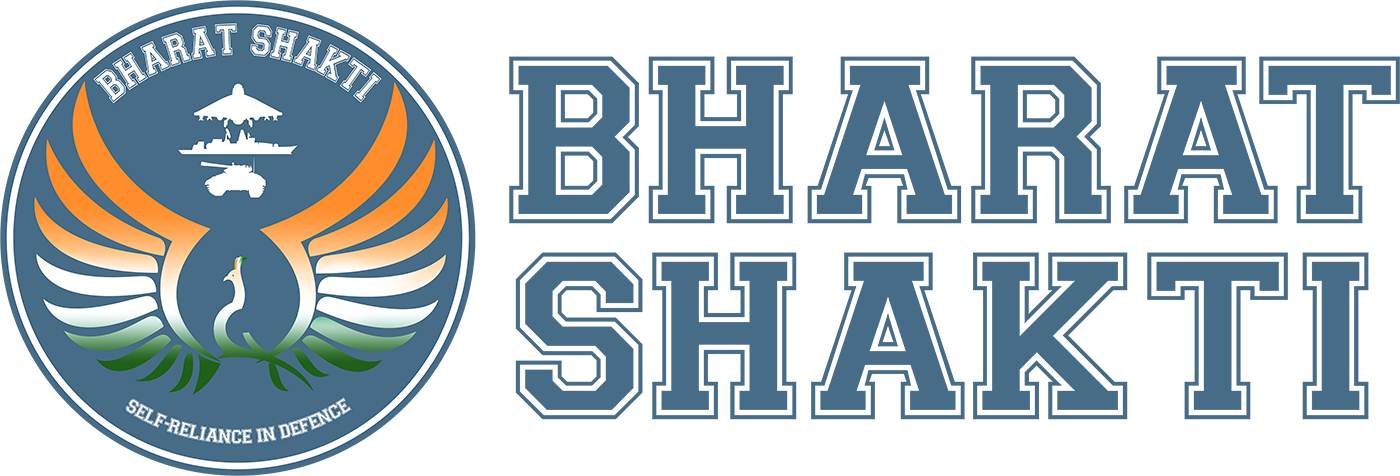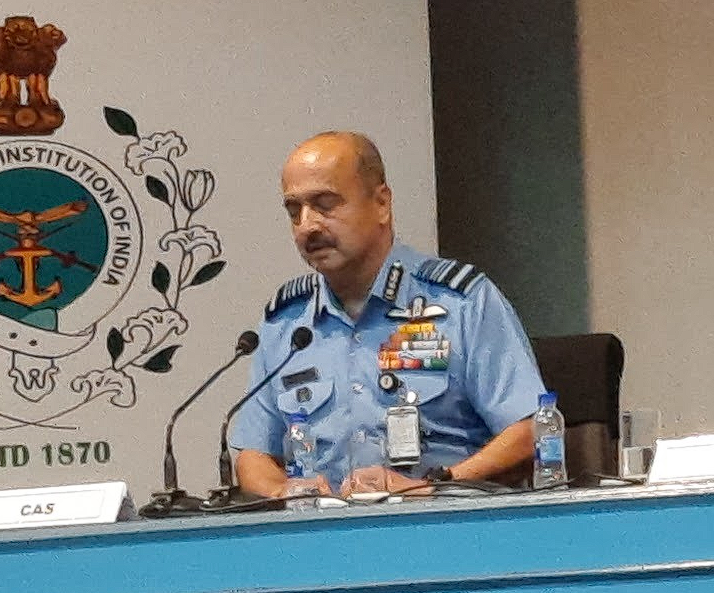“Irrespective of international treaties, ‘friendship between countries’ will always come second to a nation’s own security. There’s a lesser appetite for the global rules-based order.”
Air Chief Marshal Vivek R Chaudhari, Chief of the Air Staff, is not known for mincing his words. Addressing a packed audience at the United Services Institute auditorium in New Delhi on August 29, he began by noting that he had been asked to deliver a SWOT analysis of the IAF “and a vision of where we are going to be in our 100th year of existence,” a decade from now.
(The Indian Air Force was officially established on October 8, 1932, but its first flight took off on April 1, 1933, with six RAF-trained officers and 19 Havai Sepoys, or ‘air warriors.’)
“But we must remember that when we discuss the future, we must also rewind that many years back. If I am going to talk about where we will be ten years from today, let’s go back to where we were ten years ago, to 2013, when we were probably yet to discover the 2G network,” he said. “We did not have beyond visual range missiles. Our capabilities were far lower than what we have today. Our concept of warfighting was based on the traditional war-fighting that we had gleaned from our experiences from across the world.”
But things have changed dramatically since then, and “in the next ten years, we are going to see such rapid transformation and infusion of technology that it is going to be difficult for me to pontificate on what is going to happen two years down the line.”
“So let me begin by taking you through a very broad scan of things, looking at the changes around the world and how this world affects the Indian Air Force’s future,” he said. One, the world was in a state of increasing flux, switching from bipolar (Soviet Union/US) to unipolar (US) to multipolar (US/China/Russia/India and various other powers and groups). These recent trends had sparked Volatility, Uncertainty, Complexity and Ambiguity, or what he described as a VUCA World.
This lack of a single dominant power also presented an opportunity, and India, which was already a prominent player in world affairs, needed to ensure that all elements of CNP (comprehensive national power) continued to grow and expand.
Referring to the Russia-Ukraine conflict, he said that “Irrespective of international treaties, ‘friendship between countries’ will always come second to a nation’s own security.” There was also a decreasing appetite for a global rules-based order, he felt. And while nuclear deterrence is effective, ‘self-sufficiency in arms manufacturing is an absolute necessity’, he argued.
Private companies will take sides based on national interests, be it Elon Musk’s Starlink or Amazon’s massive databases, and this needed to be factored into any future contingency planning.
Noting that “Strong narratives can build influence globally,” he felt there can never be adequate soft power without hard power. And finally, anything, be it financial protocols like SWIFT, civilian airspace, social media-based businesses, and even international sporting bodies, can be weaponised.
He added that the Russia-Ukraine war had also driven home key lessons on the importance of Drones or UAVs, the use of Precision Guided Munitions (PGMs) and Stand Off Weapons (SOWs) and the impact of missiles.
Turning to the immediate neighbourhood, he felt the ‘No War, No Peace’ situation with Pakistan would continue, although new acquisitions of Chinese aircraft like the JF-17 J-10 and radars like the American AN/TPS-77, as well as the possible transfer of hypersonic missile tech could shift Islamabad’s policy from a “predominantly defensive to a more aggressive approach.”
As for China, its numerical superiority, the PLA’s strong Rocket Force (PLARF)/Strategic Support Force (PLASSF), increased spending on R&D (Beijing spent $456 billion on R&D in 2022, compared to India’s 50 billion), and its growing economic heft had led to “visible growing Chinese assertiveness in the region and global affairs, matching with its growing economic and military capabilities,” he said.
Over the last nine decades, the IAF had taken part in seven wars, of which five –World War II, the 1947-48, 1965, and 1971 wars with Pakistan, and the 1962 border war with China, were total wars because there was no nuclear backdrop, whereas the two subsequent wars with Pakistan (Kargil in 1998 and Balakot in 2019) were limited due to the “nuclear overhang.”
The IAF has also been a key player in Humanitarian Assistance and Disaster Relief (HADR) efforts during natural disasters like earthquakes and floods in Srinagar, Bhuj, Uttarakhand, Leh/Ladakh, and internationally during the tsunami and the COVID-19 pandemic.
It had also played a key role in evacuation missions worldwide, like bringing back 800 Indians from Ukraine, airlifting 626 personnel and 24 tonnes of load from Afghanistan following the US evacuation from the country, airlifting 510 personnel and 307 tons of load to help during the earthquake in Turkiye, and flying 12 C-130/4 C-17 sorties to evacuate over 2000 personnel including 67 foreign nationals from Sudan during the civil war there. This involved a dramatic covert night landing by C-130 at Wadi Sayyidna, a ‘degraded’ airstrip 40 km north of the capital Khartoum that lacked navigational aids and landing lights, to rescue 121 stranded Indians (including a pregnant woman) and their luggage.
India was also moving, albeit slowly, towards Atmanirbharta (self-reliance), he noted, citing the indigenous development/manufacture of the Tejas Light Combat Aircraft, the Dornier 228, Dhruv Light Combat Helicopter, as well as hi-end radars like the Arudhra Medium Power Radar (MPR), Rohini central acquisition radar (3D-CAR) and Low-Level Light Weight Radar (LLLWR), which can be deployed in diverse terrains (plains/deserts/ mountaintops/ high altitude regions) to detect and track heterogeneous air targets, including helicopters, fighters and UAVs at low and medium altitudes.
A special mention was made of the medium–lift tactical transport aircraft C-295, to be manufactured by TATA and Airbus Defence and Space in India. This venture, which involves manufacturing over 13400 detailed parts/ 4600 sub-assemblys/ all seven major component assemblies, will benefit 123 MSMEs in over seven states and generate 42.5 lakh manhours, he noted.
Over the years, the IAF had evolved rapidly regarding platform, equipment/radars and weapons, including missiles, and now had formidable force projection capabilities.
Regarding infrastructure, the IAF launched the Air Force Network (AFNET) in September 2010, replacing its old communication network with a dedicated fibre-optic vast area network that offers encrypted, secure bandwidth. Apart from this, 30 IAF airfields had been upgraded under Modernisation of Airfield Infrastructure (MAFI) Installation with Next Generation Hardened Aircraft Shelters, and 42 airfields upgraded with permanent night landing facilities.
Looking at the ‘Contours of Future Wars’, the IAF Chief felt they would be Multi-domain, Hybrid in nature, involve non-kinetic and kinetic forces and all elements of CNP, and have a shorter OODA (Observe, Orient, Decide, Act) loop. They would also be highly tech-driven, using Manned-Unmanned Teaming, Artificial Intelligence, and the Internet of Military Things.
Then came the SWOT analysis.
Under Strengths, the IAF Chief listed operations exposure and mindset, innovative tactics, techniques, and procedures, Network Centric Warfare capabilities, high training standards and effective Human Resources management, a large number of airfields in the first tier at lower elevation, and a varied inventory which included a mix of western and Russian platforms, weapons and systems.
Weaknesses included the strength of fighter squadrons, shortage of Combat Enablers like Airborne Early Warning and Control platforms and airborne refuellers, infra deficiency, with several airfields yet to be fully upgraded, and limited space assets and capabilities. Other issues included a restricted defence budget, limited indigenisation, R&D and logistical capabilities, obsolescence issues and a long gestation period for new procurements.
Opportunities included:
- The ability to transcend From Air Force to Air and Space Force. (In response to a question later, he said as part of the new theatre command systems, the French and American systems were being studied to decide whether Space merited a separate Command or should be a part of the Air Force).
- Enhanced Foreign Cooperation (Exercises/Exchanges/Diplomatic Signalling);
- Harnessing of Niche Technology and big data,
- Boost to indigenised production/export capability.
- Alternative sources of energy;
- Enhanced jointness in planning and execution and
- Realignment of strategic orientation and thought process.
Under threats, he listed the ‘Collusive Threat’ from China/Pak, increasing Asymmetry with China, the possibility of Saturation Strikes By PLARF/PLAAF, Non-Kinetic Domain Threats, Operations in an environment of Denial, maintenance and spares for Russian Equipment and the sub-optimal exploitation of Air Power.
Looking ahead, he felt the need to shift from “threat-based and demanded” to “capability demanded” force requirements, the establishment of joint structures for training and operations while maintaining service-specific core competencies, enhancing strategic thought, civil-military-academia interaction, and establishment of in-house think tanks.
In the Q&A session that was moderated by the USI DG General BK Sharma, the Air Chief skilfully avoided politically loaded questions and those that referred to the nuclear forces, politely insisting that those were beyond his purview.
Ramananda Sengupta
Also see:
https://bharatshakti.in/iafs-force-modernisation-key-role-of-ges-f414-powered-tejas-variants/
https://bharatshakti.in/tata-airbus-to-manufacture-c-295-transport-aircraft-for-iaf-in-vadodara/
https://bharatshakti.in/all-air-force-weapon-systems-operators-under-one-dedicated-branch-iaf-chief/






















